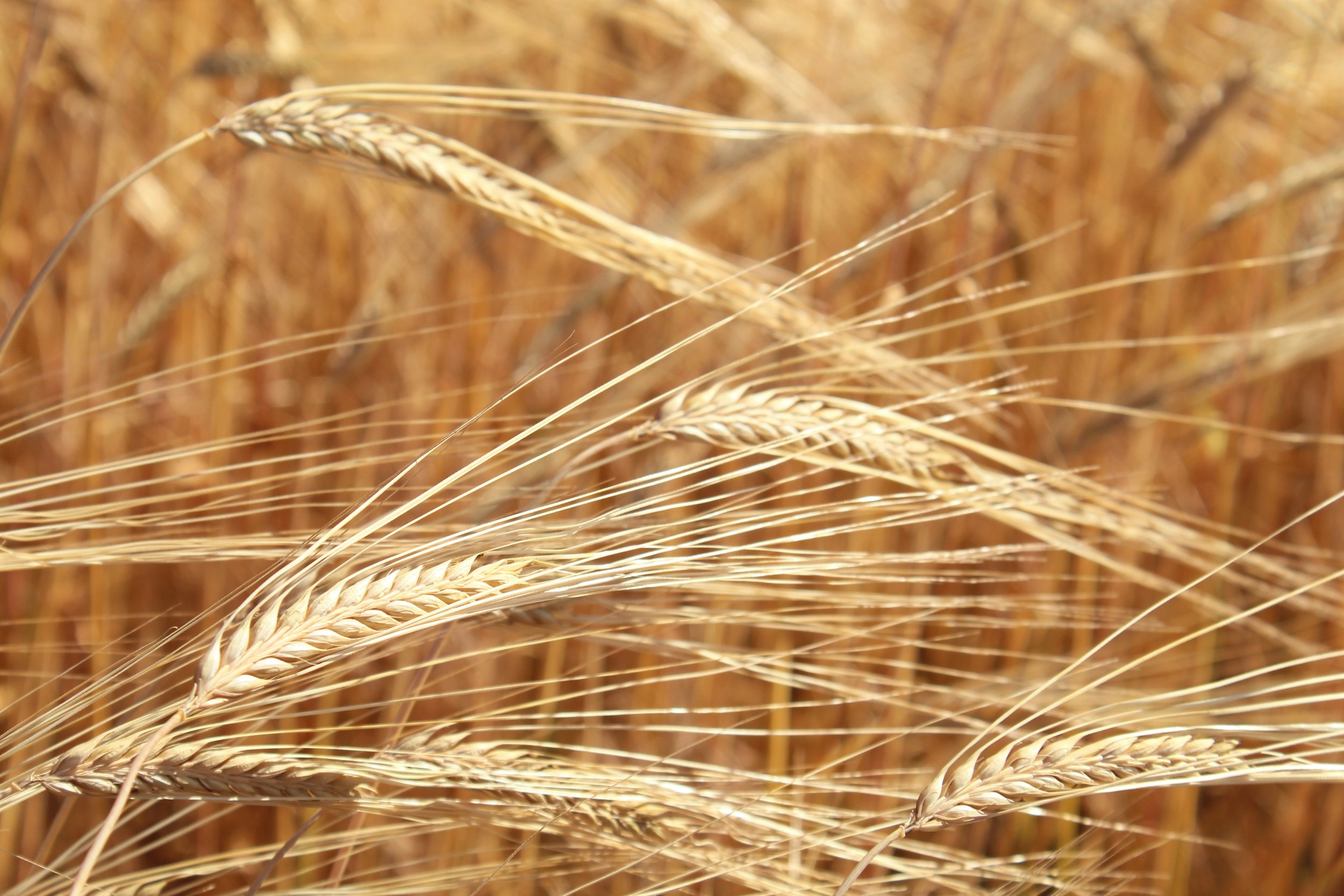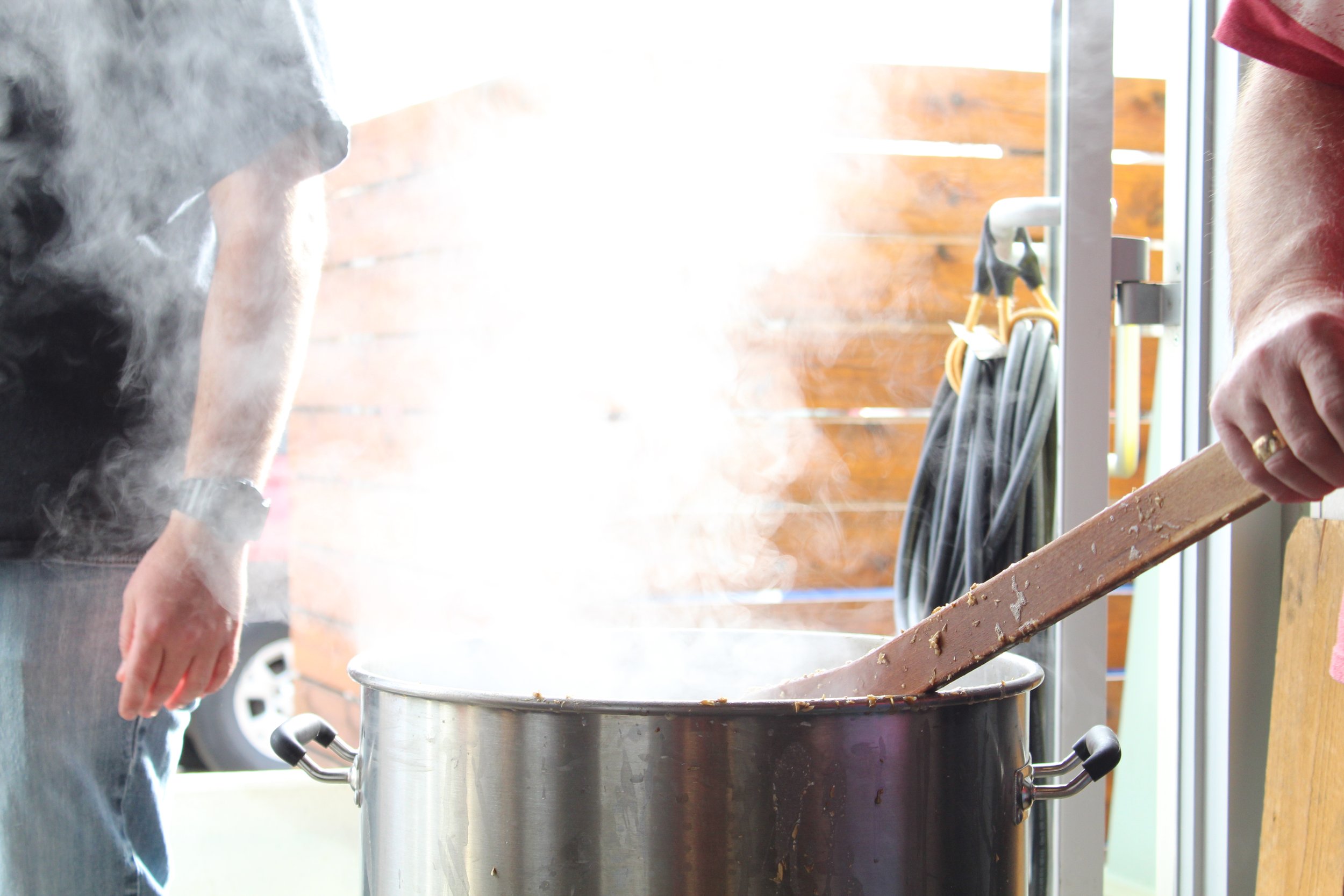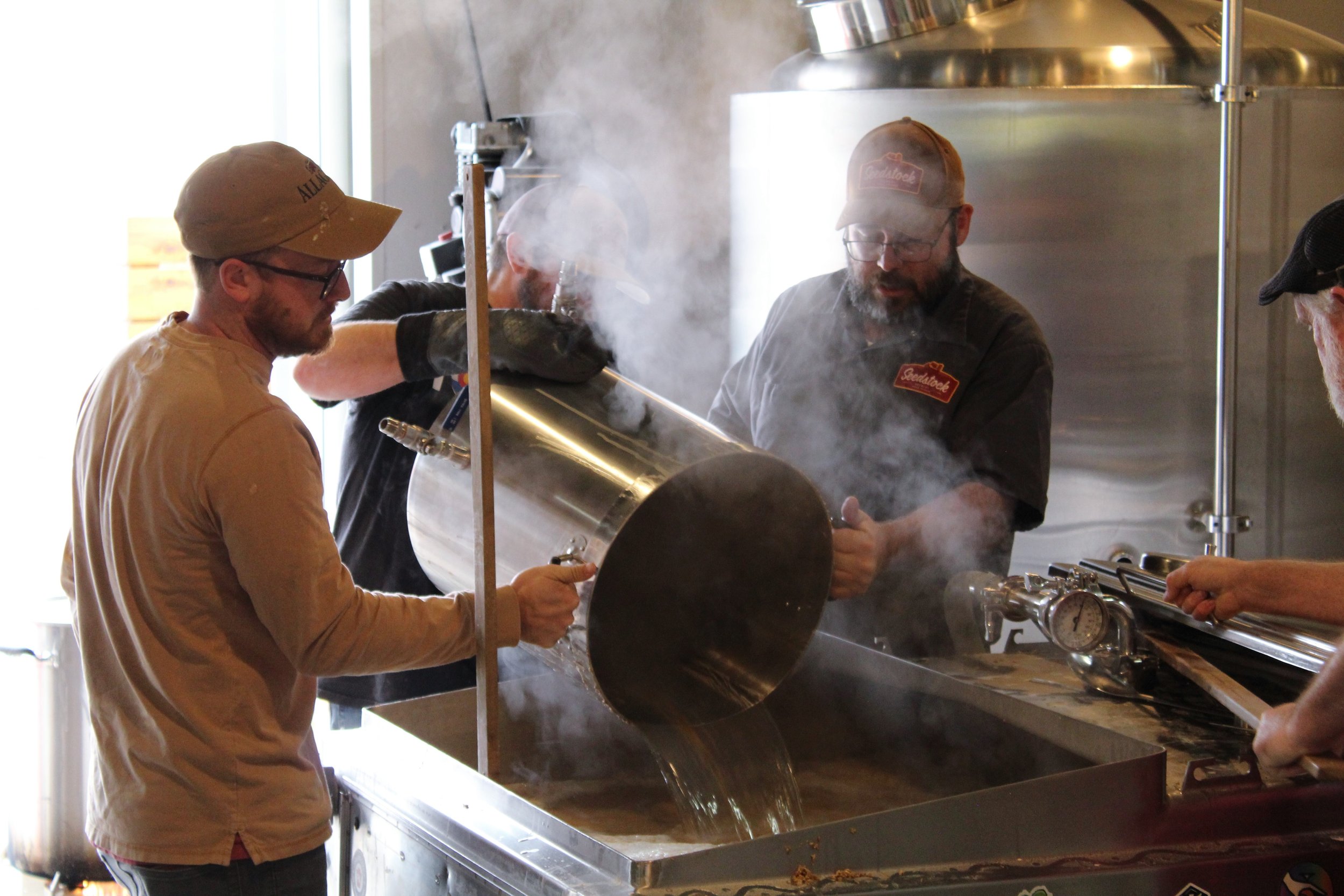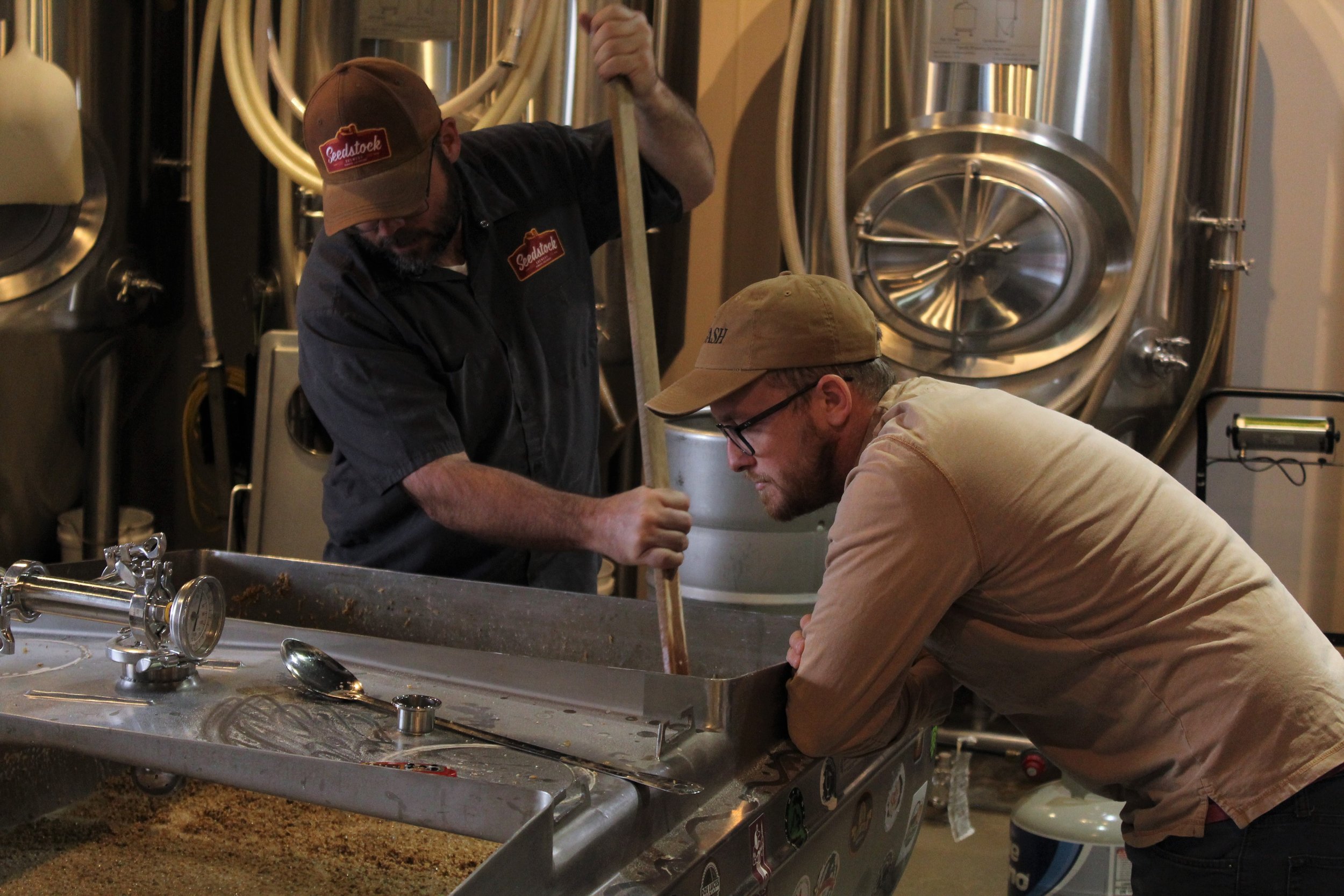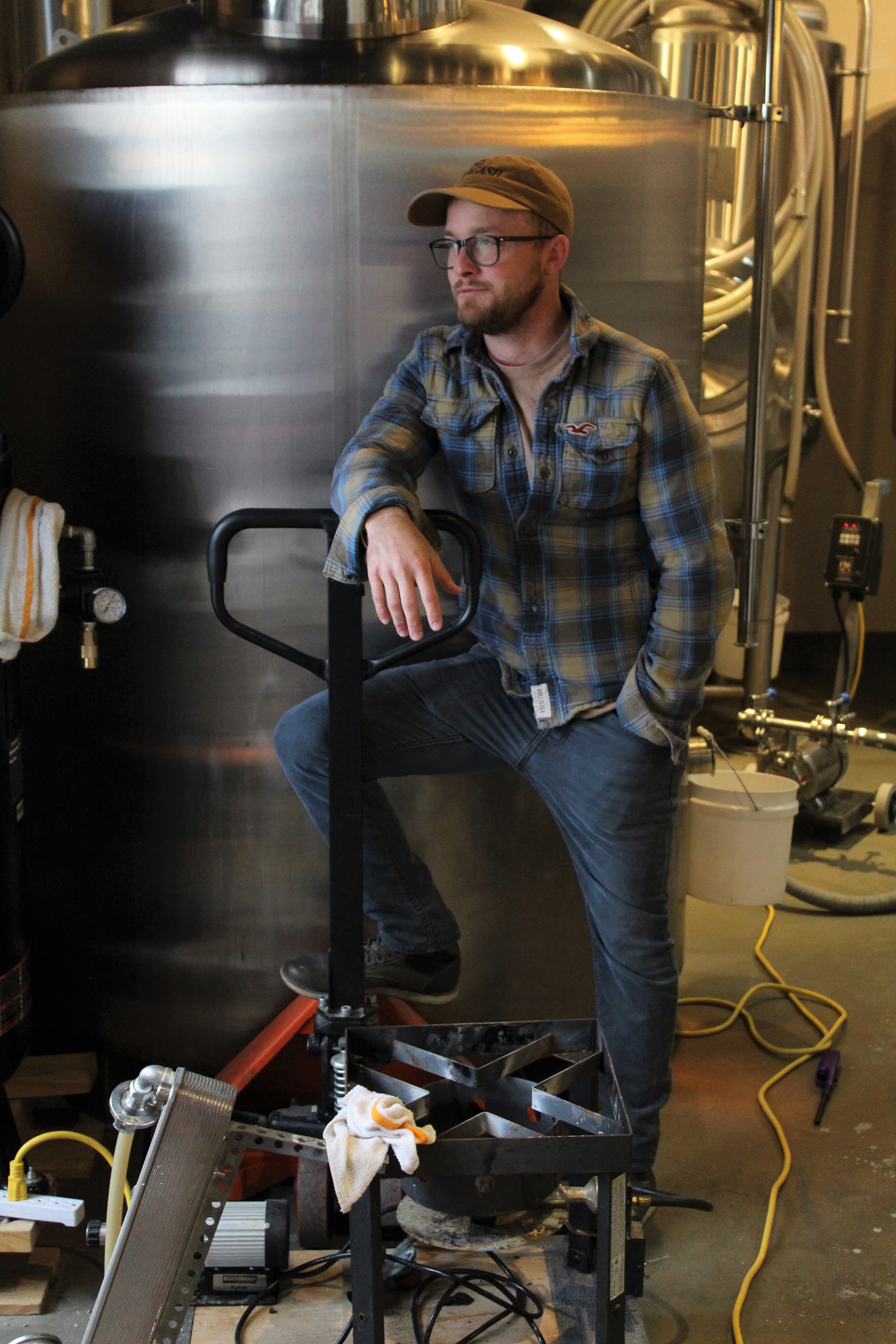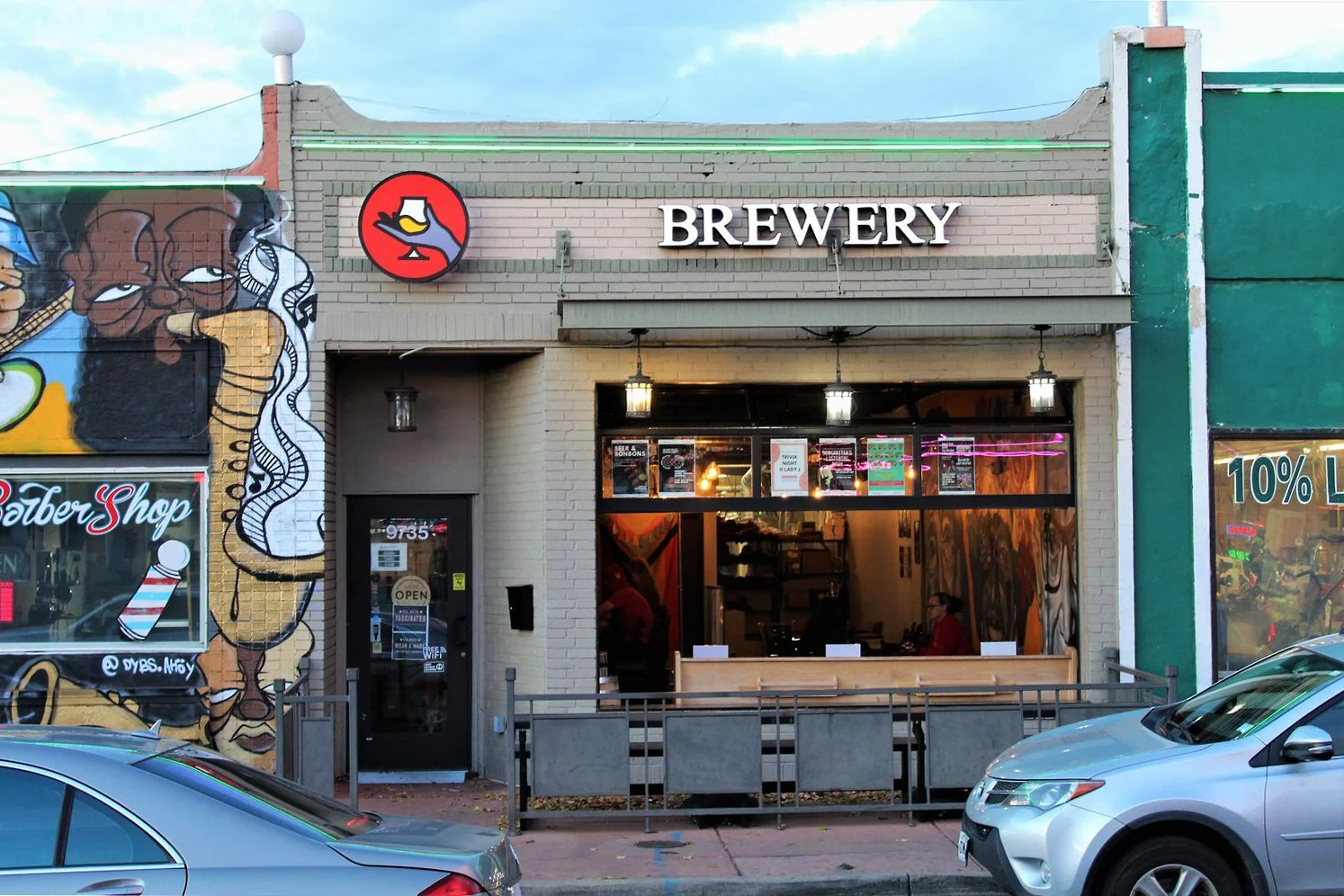After the Harvest — Tracking a Beer from Grain to Glass at Seedstock Brewery in Denver, Colorado
It’s late morning on an early June day in western Indiana, and Caleb Michalke is walking through a field of barley. One hand brushes across the heads of the pale, honey-coloured stalks, while his other holds onto the leg of his four-year-old son, who sits upon his shoulders.
The day will be hot, but a steady wind ripples the surface of the small, four-acre field of a barley variety that hasn’t been malted for beer in nearly a century. Like everything Caleb does at Sugar Creek Malt, the story of this field is rooted in family.
Photography by David Nilsen
Caleb is of Czech descent, and so is this barley he’ll soon be harvesting. His roots in the old country come from his mother. Her grandparents immigrated to the Chicago area in the late 19th century, and their children married into other Czech immigrant families. The barley is a more recent transplant—it arrived at Caleb’s door in a 200 gram packet in 2016.
Caleb met with a seedbank in the UK to source an Old World barley that would grow well in Indiana. What they sent was descended from the Moravian Haná variety used in the original Pilsner in 1842. After sitting unused in a university seedbank in Vienna for 80 years, it took to the Midwestern soil with the same assuredness as Caleb and his ancestors had.
He planted that handful of seeds in a single 50 foot row that first autumn to grow through the winter, and each year he’s been building up a seedstock of the grain he now calls Edelweiss.
“These last few years we’ve been hand-harvesting with scissors and scythes and hand winnowing it to get the seeds out,” says Caleb as we stand in the field. The variety was grown extensively in the early 20th century, but World War II halted its production. 2021 will be the first time it’s been malted in the US since before the war. That original 200 grams yielded 10,000 pounds of grain this year.
“This was the first year I walked through this field and knew it was going to be made into beer,” he reflects. “I’ve come out here almost every day and looked at this barley, at the work my family and I have done.”
***
Farther west, Ron Abbott’s Czech ancestors—along with many other Czech immigrants—settled in Nebraska around 1870. The region reminded them of the rolling hills and fields of their homeland, and it became known as the Bohemian Alps. In 2016, Ron and his brother Jason opened the lager-focused Seedstock Brewery in Denver, where the family had moved when the boys were young. They weren’t the first members of their Czech line to move to a new place and begin brewing.
“One of my favourite authors is Willa Cather, who wrote O Pioneers! and My Antonia,” Ron says. He has a white Santa Claus beard and kind eyes that present a warm vulnerability, and his emotional connection to his family’s long history is evident as we talk.
“They could have been about my Czech immigrant ancestors. They settled the same part of Nebraska she wrote about. It was a pretty common story of farmers and land,” he adds. “There was land out here, it was fertile, and they were farmers who were used to hard work. You were wired to do things yourself. If you wanted beer, you brewed it. It’s in our DNA, if you will.”
““We’re making it a very simple beer and letting it speak for itself, just this malt and Saaz hops.” ”
Family lore holds that his ancestors began brewing in their barns when they arrived in Nebraska, as there was little other access to beer. Despite the prevalence of beer in Czech culture now and historically, homebrewing would actually have been a departure for someone of Czech heritage. Prague-based beer writer Evan Rail says the commercial ubiquity of beer in what is now the Czech Republic has long kept homebrewing from being necessary.
“I don’t want to step on something as interesting as family lore, but this is not a homebrewing culture, and it wasn’t a homebrewing culture historically,” he explains. “It’s been an industrial product here for a thousand years. There might have been farmhouse beers here maybe, but I would say that wouldn’t have been common.”
Ron acknowledges it might be more mythology than history that his original immigrant ancestors homebrewed, though his dad, Ron Sr., recalls his father homebrewing as far back as the 1950s, long before it was a popular (or legal) hobby.
At Seedstock, the brothers have specialised in lager styles, and the brewery usually has multiple Czech lagers on draft. For Ron and Jason, the spirit behind Seedstock was less about recreating perfect Czech beers than about honouring the family heritage of resourcefulness and adaptation.
“That was the spirit that Seedstock started with,” says Ron. “It wasn't intended to create an exact replica of a Czech Pilsner, although I would love to be able to do that. It was more about the spirit of doing something on your own.”
***
I walk up to the doors of Seedstock at 6am on a Saturday in mid-November, long before the sun first blushes the eastern sky. Caleb arrives shortly, along with Ron, Jason, and Ron Sr. Due to family needs in Nebraska, the Abbotts had actually sold the brewery in September to their longtime friends Jerry and Kathy McIlvenna and their son, Adam McIlvenna. We are here to brew a pilsner-style Czech lager using Caleb’s Edelweiss malt, and the convergence of each family’s tradition gives the day a sense of gravity and celebration. It’s also bittersweet; this will likely be the last time the Abbotts brew in this building, and fittingly it’s to brew a beer that helps tell more of their family story.
“When we found out about this malt, it made selling harder,” says Jason shortly after he arrives. He’s in cargo shorts despite the pre-dawn chill, and it quickly becomes clear he’s the jokester of the family, though he turns reflective when talking about what the day means. “This is the first anybody is getting the opportunity to brew with this in so long. It makes us feel good to be doing this.”
Edelweiss is a slightly under modified, high-protein malt, and Caleb recommends a decoction mash when brewing with it, in order to break down its proteins and yield an extract-rich wort more familiar to modern brewers. When I arrive, Adam and Jerry are already getting hot water into the rectangular, mobile mash tun, and setting up two turkey burners for the decoction.
“We love lagers, even though they cost you in time,” Jerry says. “There’s nowhere to hide a screw-up. We want to keep honouring the Czech and German heritage here at Seedstock while injecting our own Irish, Scottish, and Hispanic heritage.”
Jerry has a jovial, grandfatherly kindness, and he and Adam have obvious enthusiasm for what they’ve taken on at Seedstock. Jerry’s wife, Kathy, is regularly involved in brew days as well, though she isn’t here today.
Once the mash reaches its first temperature rest, it’s time for the first of three decoctions. Jason and Adam scoop buckets of the mash into large pots over the burners and stir to keep them from burning.
“This one’s reading 130° F,” Jason calls out. “But my shins are closer to 160.”
The pots get dumped back into the mash, and the process is repeated over the next few hours as the main mash slowly reaches optimal temperature. The Edelweiss wort is the colour of scalded milk, cloudy and creamy, and the mash looks uncannily like wild rice soup. We’re all a little mystified by this new malt with so much history and so little modern information. None of us—not even Caleb—is really sure what a beer brewed with this will taste like, and the decision before brewday was to let the malt have the spotlight.
““When you’re serving 8% Double IPAs, there isn’t always room for another. But there’s always room for another 4% pale lager.”
”
“We’re making it a very simple beer and letting it speak for itself, just this malt and Saaz hops,” Ron says. “I have goosebumps on my arm just thinking about it.”
“This hasn’t been malted since the 1930s,” Caleb adds “I’ve done hot steeps, and it has a really nice biscuity, green grass flavour you’d expect from a [pilsner] malt. But changing from a lab to a commercial setting, we’ll see what flavours come through.”
The tone of the day is jovial but punctuated with poignancy; this brewday is a farewell for Ron and Jason, a coronation for Jerry and Adam. Ron Sr. teaches us swear words in Czech, and shows us the antique decorative beer steins his own mother made and painted by hand over half a century ago. At the end of the day, the Abbotts clear these steins out from the shelves behind the bar, symbolically ending this chapter of their lives.
***
Despite our eagerness to know what this beer will taste like, its ineffable “drinkability” will be just as important, according to Evan Rail.
“Drinkability is not something to be laughed at,”he says. “Czechs are very proud of their beer for its drinkability. When you’re serving 8% Double IPAs, there isn’t always room for another. But there’s always room for another 4% pale lager.”
Because of the country’s geographical and—during the Cold War—political isolation, Czech beer has taken its time in reaching the awareness of drinkers elsewhere. Few American or British breweries have attempted to brew true Czech lager styles, and even fewer have successfully captured the everyday specialness of these beers, according to Rail.
“I think it’s hard to get the context or the grammar of these beers without drinking them in situ here,” he tells me. “It’s hard to understand how those flavour components fit together. It’s not easy to get it from a textbook.”
As craft lagers become more popular however, more brewers are putting in the work—and the travel—to get these Czech styles right. Ron believes that attention is long overdue, and feels the general reemergence of good lager has been inevitable in craft beer.
“You keep your old pair of Levi’s and it might not be cool for a while, but give it 10 years and it’s going to come back around,” he says. “A lot of the beers we’ve brewed at Seedstock are that old pair of Levi’s. Eventually, people get it.”
When the brew day is over, we all head to Cohesion Brewing for some celebratory drinks. Cohesion brews exclusively Czech lager styles, and they pour them from side pour faucets so you can get the traditional hladinka, snyt, or mlíko pours with varying ratios of foam to beer. Sitting at a long wooden table, lifting mugs of gorgeous Czech lager, laughing and reminiscing, it’s not hard to get why Czech beer holds the place it does in its homeland. These beers are meant to be enjoyed with others, fuelling conversation and provoking that next round.
As we sit around the table talking about the brew day and the historic malt at its heart, Caleb is excited about what Sugar Creek has in Edelweiss.
“I would like to get to this barley being about 10% of our production soon,” he says, explaining that he plans to add a Vienna malt with the same barley. “It’s a neat way to honour family and this heritage variety and bring something totally unique to the market. I really think the Edelweiss will be something we can grow with and hang our hat on.”
I turn to Ron and see a pensive look on his face as he listens to Caleb. I ask him what’s on his mind and he takes a moment before responding.
“I’m sort of dreaming of my ancestors when they immigrated,” he says. “This beer we brewed today might be a beer they would really enjoy, and it would be familiar to them. I’m putting myself in their position, enjoying a beer maybe they drank and were trying to recreate in Nebraska all those years ago.”
Over a century after their ancestors left Bohemia for Nebraska and Illinois, Caleb and the Abbotts are tugging on a shared thread in their family histories with a barley that was last malted nearly a century ago, and they’re weaving in a new thread with the McIlvennas. The result will be a simple beer with the flavours of a distant homeland, a beer best shared round after round with friends. After all, there’s always room for one more.












